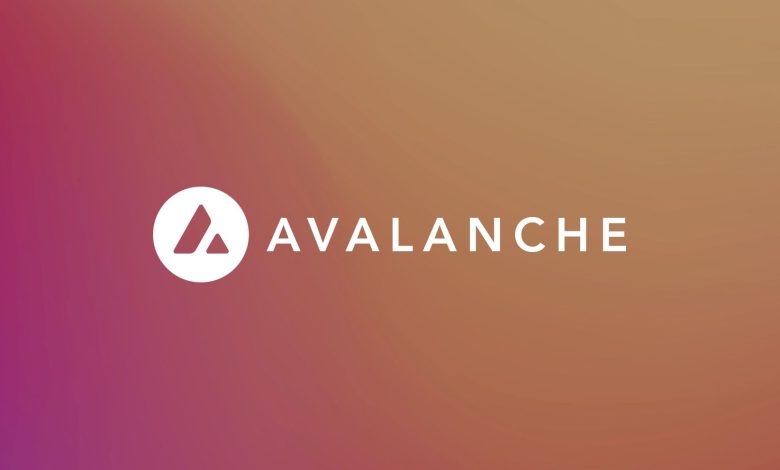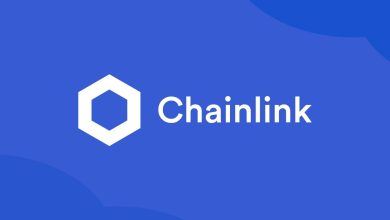Avalanche (AVAX): The Scalable Blockchain Network

- Understanding Avalanche (AVAX) and its innovative approach to blockchain scalability
- Exploring the key features that make Avalanche (AVAX) a scalable blockchain network
- The consensus mechanism behind Avalanche (AVAX) and how it sets it apart from other blockchains
- Avalanche (AVAX) vs. other popular blockchain networks: A comparative analysis
- The potential applications and use cases of Avalanche (AVAX in the decentralized finance (DeFi) space
- How Avalanche (AVAX) is paving the way for the future of blockchain technology
Understanding Avalanche (AVAX) and its innovative approach to blockchain scalability
Avalanche (AVAX) is a blockchain network that has gained attention for its innovative approach to scalability. Unlike traditional blockchains that rely on a single consensus mechanism, Avalanche uses a unique consensus protocol called Avalanche Consensus. This protocol allows the network to achieve high throughput and low latency, making it one of the fastest and most efficient blockchain networks available.
One of the key features of Avalanche is its subnets, which allow for the creation of custom blockchains within the Avalanche network. These subnets can be tailored to specific use cases, such as decentralized finance (DeFi) applications or non-fungible tokens (NFTs). This flexibility makes Avalanche a versatile platform that can support a wide range of decentralized applications.
Another important aspect of Avalanche is its governance model, which is designed to be decentralized and community-driven. This means that decisions about the future development of the network are made by the community of AVAX token holders, rather than a central authority. This democratic approach helps to ensure that the network remains open, transparent, and resistant to censorship.
Exploring the key features that make Avalanche (AVAX) a scalable blockchain network
Avalanche (AVAX) is a blockchain network known for its scalability and high transaction throughput. This is achieved through several key features that set it apart from other blockchain networks:
- 1. **Subnets**: Avalanche allows for the creation of custom subnets, which are independent blockchains that can run in parallel with the main network. This helps to increase scalability by allowing for more transactions to be processed simultaneously.
- 2. **Consensus Protocol**: Avalanche uses a novel consensus protocol called Avalanche, which is based on a new approach to achieving consensus. This protocol allows for quick finality of transactions, making the network highly efficient.
- 3. **Dynamic Validator Set**: The network has a dynamic validator set, which means that validators can be added or removed based on their performance. This helps to ensure that the network remains secure and efficient.
- 4. **Cross-Chain Compatibility**: Avalanche is compatible with other blockchain networks, allowing for seamless interoperability between different networks. This helps to increase the overall scalability of the blockchain ecosystem.
- 5. **Low Latency**: The network has low latency, meaning that transactions are confirmed quickly. This is essential for scalability, as it allows for a high volume of transactions to be processed without delays.
Overall, Avalanche (AVAX) stands out as a scalable blockchain network due to its innovative features and high performance. By addressing key scalability challenges, Avalanche is well-positioned to meet the growing demands of decentralized applications and financial systems.
The consensus mechanism behind Avalanche (AVAX) and how it sets it apart from other blockchains
The consensus mechanism behind Avalanche (AVAX) is what truly sets it apart from other blockchain networks. Unlike traditional blockchains that rely on Proof of Work (PoW) or Proof of Stake (PoS) mechanisms, Avalanche uses a novel consensus protocol known as Avalanche Consensus. This protocol allows for rapid transaction finality and high throughput, making it one of the most scalable blockchain networks available today.
One of the key features of Avalanche Consensus is its ability to achieve consensus in a decentralized manner, without the need for a central authority. This is achieved through a process called metastability, where nodes in the network independently reach agreement on the state of the ledger. This not only ensures security and reliability but also enables Avalanche to process thousands of transactions per second, far surpassing the capabilities of other blockchains.
Another unique aspect of Avalanche is its subnets feature, which allows for the creation of custom blockchains within the Avalanche network. These subnets can be tailored to specific use cases or applications, providing flexibility and scalability for developers and businesses. This modular approach sets Avalanche apart from other blockchains, making it a versatile platform for a wide range of decentralized applications.
Avalanche (AVAX) vs. other popular blockchain networks: A comparative analysis
When comparing Avalanche (AVAX) to other popular blockchain networks, it is important to consider various factors that set them apart. Here is a comparative analysis of Avalanche against some well-known blockchain networks:
- Scalability: Avalanche is known for its high throughput and low latency, making it one of the most scalable blockchain networks in the industry. This allows for faster transaction speeds and increased network efficiency compared to other networks.
- Consensus Mechanism: Avalanche uses a unique consensus mechanism called Avalanche Consensus, which enables quick finality and ensures security without compromising decentralization. In contrast, some other networks may use Proof of Work or Proof of Stake, which can be less efficient.
- Interoperability: Avalanche is designed to be interoperable with other blockchain networks, allowing for seamless communication and transfer of assets between different networks. This interoperability sets Avalanche apart from networks that are more closed off.
- Smart Contracts: Avalanche supports the creation and execution of smart contracts, similar to other blockchain networks like Ethereum. However, Avalanche’s architecture allows for more efficient and cost-effective smart contract execution.
- Decentralization: Avalanche prides itself on its decentralized nature, with a large number of validators securing the network. This decentralization ensures network security and prevents any single point of failure, unlike some more centralized networks.
In conclusion, Avalanche (AVAX) stands out among other blockchain networks due to its scalability, unique consensus mechanism, interoperability, efficient smart contract execution, and strong decentralization. These factors make Avalanche a promising option for developers and users looking for a high-performance blockchain network.
The potential applications and use cases of Avalanche (AVAX in the decentralized finance (DeFi) space
The potential applications and use cases of Avalanche (AVAX) in the decentralized finance (DeFi) space are vast and promising. As a scalable blockchain network, Avalanche offers high throughput and low latency, making it ideal for various DeFi applications. One of the key use cases of AVAX in DeFi is as a platform for decentralized exchanges (DEXs). With its fast transaction speeds and low fees, AVAX can facilitate seamless and efficient trading of digital assets.
Another potential application of Avalanche in DeFi is as a platform for decentralized lending and borrowing protocols. AVAX’s high performance and low transaction costs make it well-suited for peer-to-peer lending and borrowing activities. Users can easily access liquidity and earn interest on their assets through decentralized lending protocols built on the Avalanche network.
Furthermore, Avalanche can be used for creating and trading synthetic assets, such as stablecoins and tokenized assets. By leveraging AVAX’s scalability and interoperability features, developers can build innovative DeFi applications that enable users to access a wide range of synthetic assets with ease. This opens up new opportunities for diversification and risk management in the DeFi space.
How Avalanche (AVAX) is paving the way for the future of blockchain technology
Avalanche (AVAX) is revolutionizing the blockchain industry with its innovative approach to scalability and decentralization. By utilizing a unique consensus protocol known as Avalanche, this blockchain network is able to achieve high throughput and low latency, making it ideal for a wide range of applications.
One of the key features of Avalanche is its ability to support custom subnets, allowing developers to create their own blockchain networks within the larger Avalanche ecosystem. This flexibility enables developers to tailor their blockchain networks to specific use cases, whether it be for decentralized finance, supply chain management, or any other application that requires a scalable and secure blockchain solution.
In addition to its scalability, Avalanche also prioritizes security and decentralization. The network is secured by a large number of validators who participate in the consensus process, ensuring that the network remains secure and resistant to attacks. Furthermore, Avalanche’s governance model is designed to be decentralized, allowing token holders to participate in key decision-making processes.
Overall, Avalanche (AVAX) is paving the way for the future of blockchain technology by offering a scalable, secure, and decentralized network that can support a wide range of applications. With its innovative approach to consensus and governance, Avalanche is poised to become a leading blockchain platform in the years to come.



